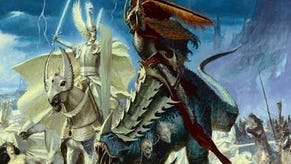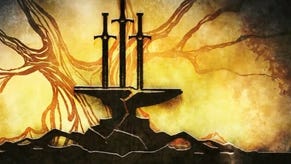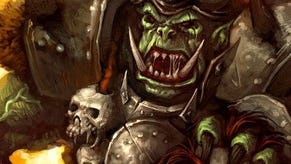Warhammer Online: Age of Reckoning
Beta Report Part 1: The early levels.
Sometimes they present an awkward obstacle you'll have to navigate around to get to the chapter, if no other players are around. It's amazing how often those players do come, though, and once a large group settles on a PQ it tends to stay there, replaying it over and over again to grind up influence, or for one more shot at the horribly addictive slot-machine loot system. And Public Quests really are everywhere: although Mythic has included quest pointers to them, they're hardly necessary; you'll stumble upon them naturally all the time. It's even possible to jump into open parties and warbands (raid parties) created by other players, and the game helpfully tells you what parties are open and nearby.
After such a packed and satisfying questing experience, it's a disappointment to arrive at the RVR battlefield - player-versus-player realm warfare being the hook Warhammer Online is hung on - and find it barren. Deserted. No scraps anywhere. That's fine, you think, I'll just queue up for a Scenario instead: Scenarios are WAR's equivalent of Battlegrounds - instanced multiplayer maps, usually with a base-capture theme - and unlike WOW's tiny handful, there are dozens of these, one for each zone. But you can queue all you like in the Greenskin starting zone: you won't get a match.
It soon becomes apparent that all the RVR action, whether in the open world or in scenarios, is concentrated on the Empire versus Chaos line. This could merely be a quirk of this relatively low-population beta server, or it could be down to the fact that players are naturally gravitating to where the ultimate endgame of city sieges will be played out, now that the Empire and Chaos capitals are the only remaining cities in the game.
Either way, it illustrates a problem Mythic will face with Warhammer Online: controlling the flow of the game's population. Because this is a genuinely massively multiplayer game, with genuinely massively multiplayer content - as opposed to WOW, which is a massively multiplayer world with content aimed mostly at solo players and small groups - it relies very much on players doing what they're supposed to, and filling out the numbers. Public Quests are working well at the moment, but RVR is only working in certain places.
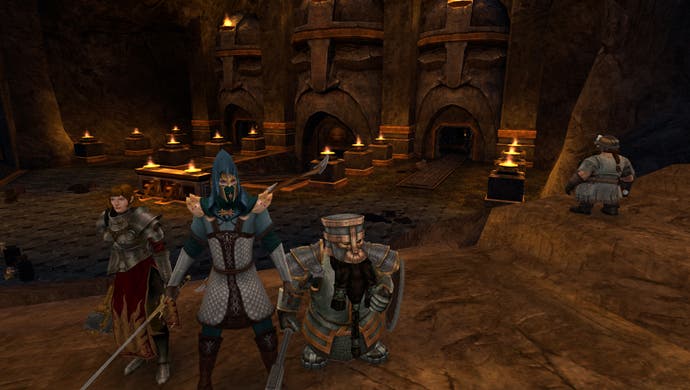
Empty battlefields give your suspension of disbelief a nasty knock, but the good news is that it's easy and quick to get to where the action is. We jump in to an early-levels Empire versus Chaos Scenario and enjoy its seesawing scraps very much. Although Scenarios add nothing particularly new to a well-worn format, having the option to play them out across multiple subtly different maps will certainly make a nice change; here's hoping that doesn't spread players out too thinly to be able to reliably get games.
Open-world player-versus-player - always a failing of WOW's - works well enough, when we finally encounter it in Nordland. The tightly limited size of the RVR areas in the game does help focus the action on a single battlefront, even when there are multiple bases to capture; with this, as in Public Quests, Mythic's world designers deserve a lot of credit for their carefully funnelling players into the action through the landscape design.
WAR's dense and linear nature does mean that simple exploration isn't the unalloyed joy it can be in the best MMOs. This is a game for fighters, not adventurers. The game world is a good deal more handsome than we first thought, but even a bit of flight-hopping around later levels reveals that it's not particularly varied. The Elven areas have some startlingly beautiful architecture and lush meadows, but overall are the most boring of the three.
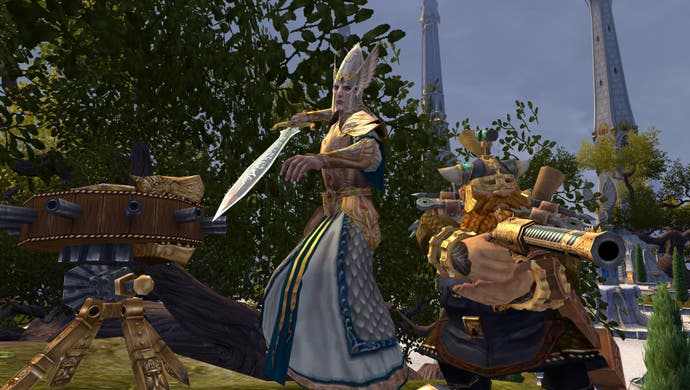
The Dwarfs and Greenskins make their way through craggy mountains littered with ancient relics and siege engines; dramatic and well-executed, but rather clichéd. Once again, Empire and Chaos come off the best by far, making excellent use of the less familiar reference points of the Warhammer licence in their vision of a 17th-century pastoral idyll gone horribly wrong, a sort of occult English Civil War.
Continuing the tourism, we take in the streets of the two remaining capitals, Altdorf and the Inevitable City. Their scale certainly is impressive, and considering the need to cycle them through several ranks of prosperity, it's easy to see why creating six towns on such a scale was just too much for Mythic. Altdorf is one of the most detailed and credible virtual towns we can think of, with no loading breaks whatsoever. The Inevitable City looks fantastic, but it's harder to imagine it feeling like an actual, organic home to its player inhabitants, as the likes of WOW's Orgrimmar and Stormwind do so spectacularly well.


